#writing in Chinese
Explore tagged Tumblr posts
Text

Shen Yueh, translated by Kenneth Rexroth, from "Farewell to Fan Yun at an Ch'eng,"
#lit#shen yueh#kenneth rexroth#poetry#dreams#chinese literature#writings#fragments#typography#selections#dark academia#p
9K notes
·
View notes
Text
我家搬家得故事

两年以前我家住在赫尔松。赫尔松是一座乌克兰的城市。这座城市很古老,历史悠。它位于乌克兰的南部,在第聂伯罗河岸边。因为两年前特别军事行动开始了,所以我家必须搬家。这个情况很惊险。我们着急收拾行李,然后为我们的宠物准备了动物笼子。我们不能留下它们,我们想方设法带它们一起去,但是我们没有机会带奶奶一起去。我们挤了过去上船。我们终于在河对岸上岸了,感觉安全了。一个人帮我们忙。他开车带我们去一座城镇。那座城镇是斯卡多夫斯克。在斯卡多夫斯克我家有一套公寓。早些时候我们夏天常常去那儿度假,但是那次我们到那儿停留大概四个月。虽然我喜欢斯卡多夫斯克,但是在那儿我们找工作很困难。一段时间后我妈妈发现了一个俄罗斯联邦政府令。我们可以用联邦资金在俄罗斯买房子。我们有收拾行李,又准备动物笼子。我们从斯卡多夫斯克坐公交车去克里米亚,然后从克里米亚坐火车去下诺夫哥罗德。在路上走了两天。我们累死了。最后我们到下诺夫哥罗德的时候,我们可以租房住一段时间。我们就开始找一套新公寓。这个问题不容易,但是我们找好了一套合适的公寓。我们感到高兴了,但是我们买着这套公寓的时候有点儿紧张。我们终于可以搬家了! 原来我们有太多的东西。你可能想知道我们是怎么带所有东西到新家的。我们是坐车租车带所有东西到新家的。我们的新公寓有一间大客厅,一间宽敞的厨房,一间卫生间,还有两间卧室。现在我们过的���好。虽然我们的新公寓跟老家很不一样,但是我们很喜欢我们的新公寓。有时候我们想奶奶,有时候我们想老家。我们想尽快回家。我们必须离开老家的时候心中无奈。 河岸边 - river bank 河对岸 - across the river 上岸 - to go ashore 军事 - military 行动 - action, operation 惊险 - thrilling, alarmingly dangerous 安全 - safe 着急 - in a hurry, worried 很无奈 - helpless 收拾行李 - to pack up suitcases 宠物 - pets 笼子 - animal cages 机会 - an opportunity 上船 - to get on board 终于 - finally 城镇 - a town 夏天 - summer 停留 - to stay 留下 - to leave smb 大概 - approximately 度假 - to go on holiday 联邦 - federal 政府 - government 法令 - an order/decree/edict 资金 -funds 一段时间 - a while 容易 - easy 紧张 - nervous 客厅 - living room 卫生间 - toilet room 宽敞 - spacious 厨房 - kitchen 卧室 - bedroom 尽快 - as quickly as possible 必须 - must, have to 离开 - to leave, to depart
0 notes
Text
Fantasy Guide to Interiors
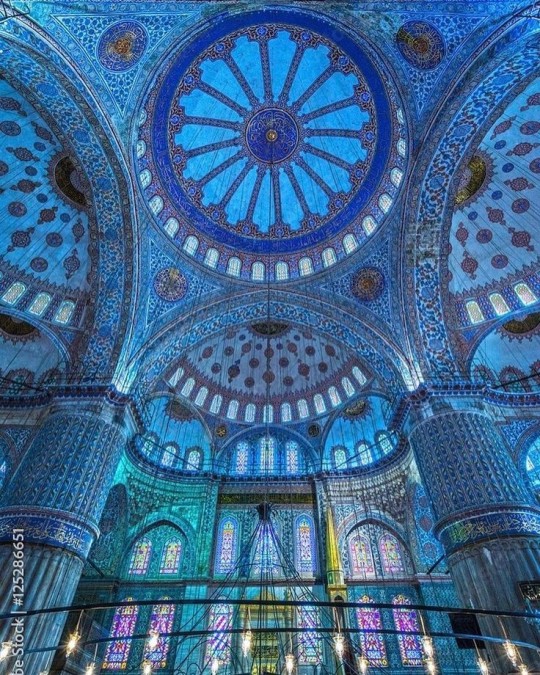
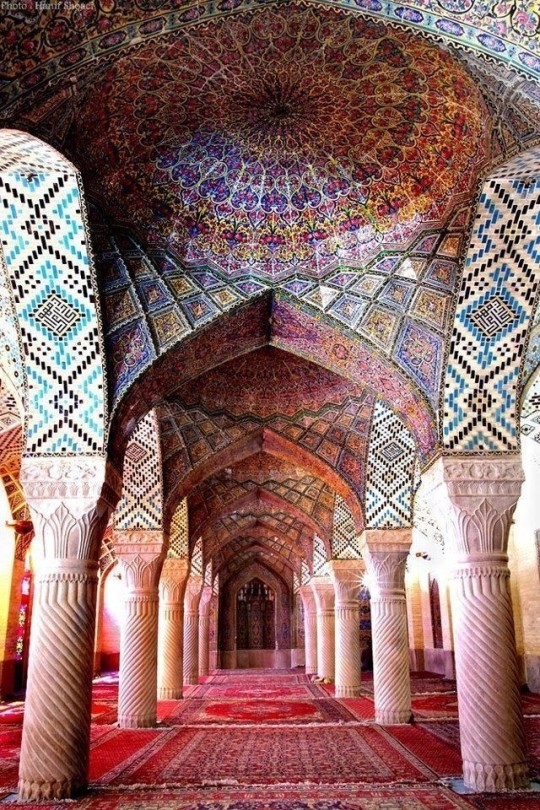
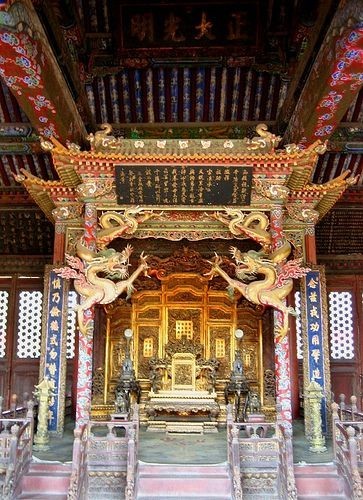
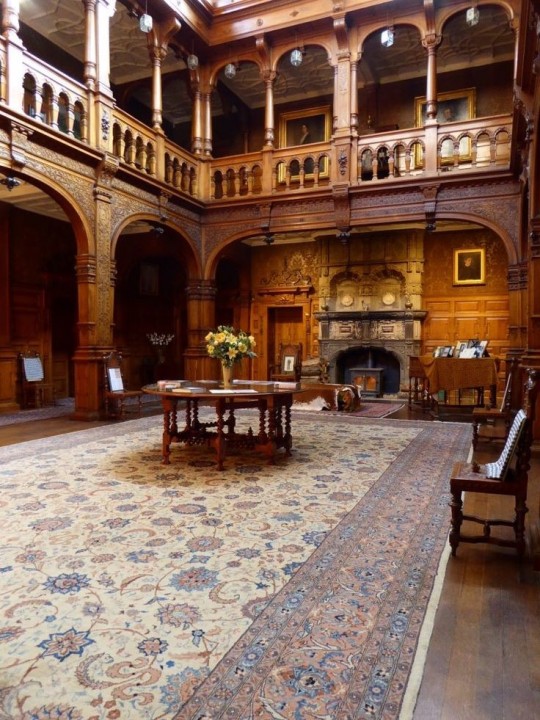
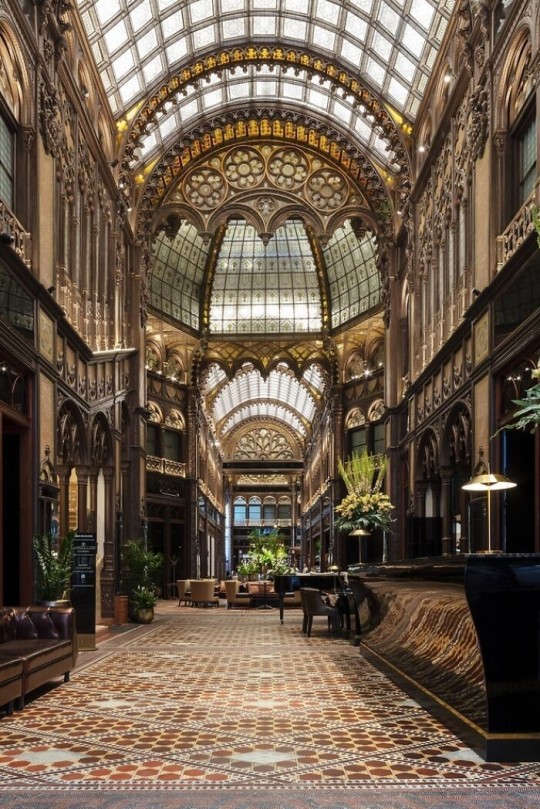
As a followup to the very popular post on architecture, I decided to add onto it by exploring the interior of each movement and the different design techniques and tastes of each era. This post at be helpful for historical fiction, fantasy or just a long read when you're bored.
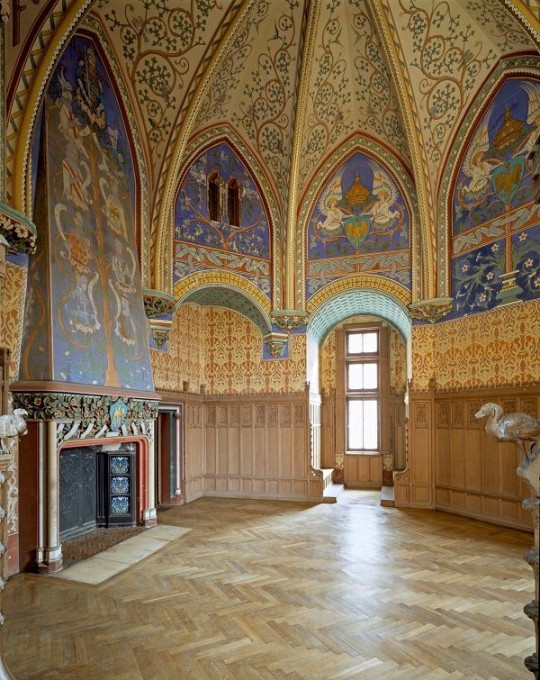
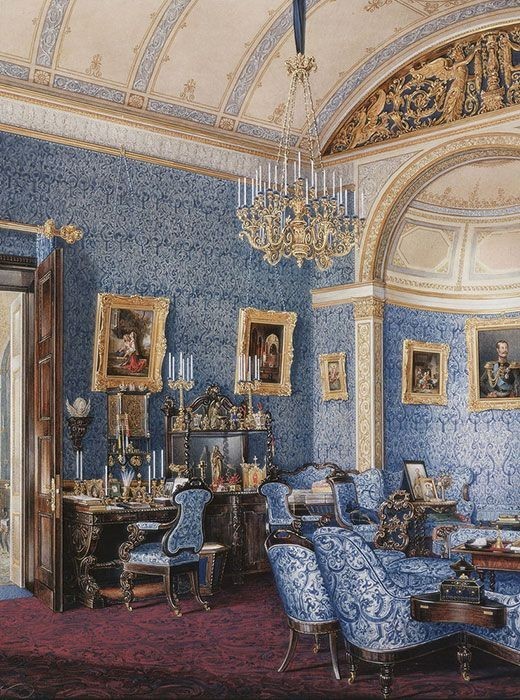
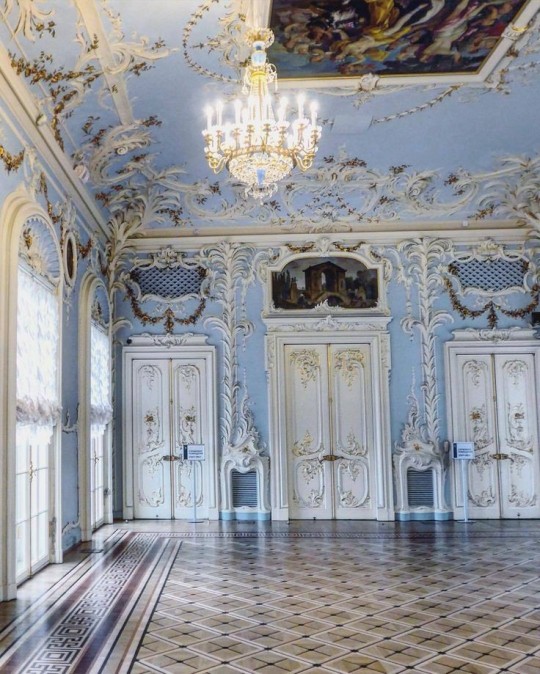
Interior Design Terms
Reeding and fluting: Fluting is a technique that consists a continuous pattern of concave grooves in a flat surface across a surface. Reeding is it's opposite.
Embossing: stamping, carving or moulding a symbol to make it stand out on a surface.
Paneling: Panels of carved wood or fabric a fixed to a wall in a continuous pattern.
Gilding: the use of gold to highlight features.
Glazed Tile: Ceramic or porcelain tiles coated with liquid coloured glass or enamel.
Column: A column is a pillar of stone or wood built to support a ceiling. We will see more of columns later on.
Bay Window: The Bay Window is a window projecting outward from a building.
Frescos: A design element of painting images upon wet plaster.
Mosaic: Mosaics are a design element that involves using pieces of coloured glass and fitted them together upon the floor or wall to form images.
Mouldings: ornate strips of carved wood along the top of a wall.
Wainscoting: paneling along the lower portion of a wall.
Chinoiserie: A European take on East Asian art. Usually seen in wallpaper.
Clerestory: A series of eye-level windows.
Sconces: A light fixture supported on a wall.
Niche: A sunken area within a wall.
Monochromatic: Focusing on a single colour within a scheme.
Ceiling rose: A moulding fashioned on the ceiling in the shape of a rose usually supporting a light fixture.
Baluster: the vertical bars of a railing.
Façade: front portion of a building
Lintel: Top of a door or window.
Portico: a covered structure over a door supported by columns
Eaves: the part of the roof overhanging from the building
Skirting: border around lower length of a wall
Ancient Greece
Houses were made of either sun-dried clay bricks or stone which were painted when they dried. Ground floors were decorated with coloured stones and tiles called Mosaics. Upper level floors were made from wood. Homes were furnished with tapestries and furniture, and in grand homes statues and grand altars would be found. Furniture was very skillfully crafted in Ancient Greece, much attention was paid to the carving and decoration of such things. Of course, Ancient Greece is ancient so I won't be going through all the movements but I will talk a little about columns.
Doric: Doric is the oldest of the orders and some argue it is the simplest. The columns of this style are set close together, without bases and carved with concave curves called flutes. The capitals (the top of the column) are plain often built with a curve at the base called an echinus and are topped by a square at the apex called an abacus. The entablature is marked by frieze of vertical channels/triglyphs. In between the channels would be detail of carved marble. The Parthenon in Athens is your best example of Doric architecture.
Ionic: The Ionic style was used for smaller buildings and the interiors. The columns had twin volutes, scroll-like designs on its capital. Between these scrolls, there was a carved curve known as an egg and in this style the entablature is much narrower and the frieze is thick with carvings. The example of Ionic Architecture is the Temple to Athena Nike at the Athens Acropolis.
Corinthian: The Corinthian style has some similarities with the Ionic order, the bases, entablature and columns almost the same but the capital is more ornate its base, column, and entablature, but its capital is far more ornate, commonly carved with depictions of acanthus leaves. The style was more slender than the others on this list, used less for bearing weight but more for decoration. Corinthian style can be found along the top levels of the Colosseum in Rome.
Tuscan: The Tuscan order shares much with the Doric order, but the columns are un-fluted and smooth. The entablature is far simpler, formed without triglyphs or guttae. The columns are capped with round capitals.
Composite: This style is mixed. It features the volutes of the Ionic order and the capitals of the Corinthian order. The volutes are larger in these columns and often more ornate. The column's capital is rather plain. for the capital, with no consistent differences to that above or below the capital.
Ancient Rome
Rome is well known for its outward architectural styles. However the Romans did know how to add that rizz to the interior. Ceilings were either vaulted or made from exploded beams that could be painted. The Romans were big into design. Moasics were a common interior sight, the use of little pieces of coloured glass or stone to create a larger image. Frescoes were used to add colour to the home, depicting mythical figures and beasts and also different textures such as stonework or brick. The Romans loved their furniture. Dining tables were low and the Romans ate on couches. Weaving was a popular pastime so there would be tapestries and wall hangings in the house. Rich households could even afford to import fine rugs from across the Empire. Glass was also a feature in Roman interior but windows were usually not paned as large panes were hard to make. Doors were usually treated with panels that were carved or in lain with bronze.
Ancient Egypt
Egypt was one of the first great civilisations, known for its immense and grand structures. Wealthy Egyptians had grand homes. The walls were painted or plastered usually with bright colours and hues. The Egyptians are cool because they mapped out their buildings in such a way to adhere to astrological movements meaning on special days if the calendar the temple or monuments were in the right place always. The columns of Egyptian where thicker, more bulbous and often had capitals shaped like bundles of papyrus reeds. Woven mats and tapestries were popular decor. Motifs from the river such as palms, papyrus and reeds were popular symbols used.
Ancient Africa
African Architecture is a very mixed bag and more structurally different and impressive than Hollywood would have you believe. Far beyond the common depictions of primitive buildings, the African nations were among the giants of their time in architecture, no style quite the same as the last but just as breathtaking.
Rwandan Architecture: The Rwandans commonly built of hardened clay with thatched roofs of dried grass or reeds. Mats of woven reeds carpeted the floors of royal abodes. These residences folded about a large public area known as a karubanda and were often so large that they became almost like a maze, connecting different chambers/huts of all kinds of uses be they residential or for other purposes.
Ashanti Architecture: The Ashanti style can be found in present day Ghana. The style incorporates walls of plaster formed of mud and designed with bright paint and buildings with a courtyard at the heart, not unlike another examples on this post. The Ashanti also formed their buildings of the favourite method of wattle and daub.
Nubian Architecture: Nubia, in modern day Ethiopia, was home to the Nubians who were one of the world's most impressive architects at the beginning of the architecture world and probably would be more talked about if it weren't for the Egyptians building monuments only up the road. The Nubians were famous for building the speos, tall tower-like spires carved of stone. The Nubians used a variety of materials and skills to build, for example wattle and daub and mudbrick. The Kingdom of Kush, the people who took over the Nubian Empire was a fan of Egyptian works even if they didn't like them very much. The Kushites began building pyramid-like structures such at the sight of Gebel Barkal
Japanese Interiors
Japenese interior design rests upon 7 principles. Kanso (簡素)- Simplicity, Fukinsei (不均整)- Asymmetry, Shizen (自然)- Natural, Shibumi (渋味) – Simple beauty, Yugen (幽玄)- subtle grace, Datsuzoku (脱俗) – freedom from habitual behaviour, Seijaku (静寂)- tranquillity.
Common features of Japanese Interior Design:
Shoji walls: these are the screens you think of when you think of the traditional Japanese homes. They are made of wooden frames, rice paper and used to partition
Tatami: Tatami mats are used within Japanese households to blanket the floors. They were made of rice straw and rush straw, laid down to cushion the floor.
Genkan: The Genkan was a sunken space between the front door and the rest of the house. This area is meant to separate the home from the outside and is where shoes are discarded before entering.
Japanese furniture: often lowest, close to the ground. These include tables and chairs but often tanked are replaced by zabuton, large cushions. Furniture is usually carved of wood in a minimalist design.
Nature: As both the Shinto and Buddhist beliefs are great influences upon architecture, there is a strong presence of nature with the architecture. Wood is used for this reason and natural light is prevalent with in the home. The orientation is meant to reflect the best view of the world.
Islamic World Interior
The Islamic world has one of the most beautiful and impressive interior design styles across the world. Colour and detail are absolute staples in the movement. Windows are usually not paned with glass but covered in ornate lattices known as jali. The jali give ventilation, light and privacy to the home. Islamic Interiors are ornate and colourful, using coloured ceramic tiles. The upper parts of walls and ceilings are usually flat decorated with arabesques (foliate ornamentation), while the lower wall areas were usually tiled. Features such as honeycombed ceilings, horseshoe arches, stalactite-fringed arches and stalactite vaults (Muqarnas) are prevalent among many famous Islamic buildings such as the Alhambra and the Blue Mosque.
Byzantine (330/395–1453 A. D)
The Byzantine Empire or Eastern Roman Empire was where eat met west, leading to a melting pot of different interior designs based on early Christian styles and Persian influences. Mosaics are probably what you think of when you think of the Byzantine Empire. Ivory was also a popular feature in the Interiors, with carved ivory or the use of it in inlay. The use of gold as a decorative feature usually by way of repoussé (decorating metals by hammering in the design from the backside of the metal). Fabrics from Persia, heavily embroidered and intricately woven along with silks from afar a field as China, would also be used to upholster furniture or be used as wall hangings. The Byzantines favoured natural light, usually from the use of copolas.
Indian Interiors
India is of course, the font of all intricate designs. India's history is sectioned into many eras but we will focus on a few to give you an idea of prevalent techniques and tastes.
The Gupta Empire (320 – 650 CE): The Gupta era was a time of stone carving. As impressive as the outside of these buildings are, the Interiors are just as amazing. Gupta era buildings featured many details such as ogee (circular or horseshoe arch), gavaksha/chandrashala (the motif centred these arches), ashlar masonry (built of squared stone blocks) with ceilings of plain, flat slabs of stone.
Delhi Sultanate (1206–1526): Another period of beautifully carved stone. The Delhi sultanate had influence from the Islamic world, with heavy uses of mosaics, brackets, intricate mouldings, columns and and hypostyle halls.
Mughal Empire (1526–1857): Stonework was also important on the Mughal Empire. Intricately carved stonework was seen in the pillars, low relief panels depicting nature images and jalis (marble screens). Stonework was also decorated in a stye known as pietra dura/parchin kari with inscriptions and geometric designs using colored stones to create images. Tilework was also popular during this period. Moasic tiles were cut and fitted together to create larger patters while cuerda seca tiles were coloured tiles outlined with black.
Chinese Interiors
Common features of Chinese Interiors
Use of Colours: Colour in Chinese Interior is usually vibrant and bold. Red and Black are are traditional colours, meant to bring luck, happiness, power, knowledge and stability to the household.
Latticework: Lattices are a staple in Chinese interiors most often seen on shutters, screens, doors of cabinets snf even traditional beds.
Lacquer: Multiple coats of lacquer are applied to furniture or cabinets (now walls) and then carved. The skill is called Diaoqi (雕漆).
Decorative Screens: Screens are used to partition off part of a room. They are usually of carved wood, pained with very intricate murals.
Shrines: Spaces were reserved on the home to honour ancestors, usually consisting of an altar where offerings could be made.
Of course, Chinese Interiors are not all the same through the different eras. While some details and techniques were interchangeable through different dynasties, usually a dynasty had a notable style or deviation. These aren't all the dynasties of course but a few interesting examples.
Song Dynasty (960–1279): The Song Dynasty is known for its stonework. Sculpture was an important part of Song Dynasty interior. It was in this period than brick and stone work became the most used material. The Song Dynasty was also known for its very intricate attention to detail, paintings, and used tiles.
Ming Dynasty(1368–1644): Ceilings were adorned with cloisons usually featuring yellow reed work. The floors would be of flagstones usually of deep tones, mostly black. The Ming Dynasty favoured richly coloured silk hangings, tapestries and furnishings. Furniture was usually carved of darker woods, arrayed in a certain way to bring peace to the dwelling.
Han Dynasty (206 BC-220 AD): Interior walls were plastered and painted to show important figures and scenes. Lacquer, though it was discovered earlier, came into greater prominence with better skill in this era.
Tang Dynasty (618–907) : The colour palette is restrained, reserved. But the Tang dynasty is not without it's beauty. Earthenware reached it's peak in this era, many homes would display fine examples as well. The Tang dynasty is famous for its upturned eaves, the ceilings supported by timber columns mounted with metal or stone bases. Glazed tiles were popular in this era, either a fixed to the roof or decorating a screen wall.
Romanesque (6th -11th century/12th)
Romanesque Architecture is a span between the end of Roman Empire to the Gothic style. Taking inspiration from the Roman and Byzantine Empires, the Romanesque period incorporates many of the styles. The most common details are carved floral and foliage symbols with the stonework of the Romanesque buildings. Cable mouldings or twisted rope-like carvings would have framed doorways. As per the name, Romansque Interiors relied heavily on its love and admiration for Rome. The Romanesque style uses geometric shapes as statements using curves, circles snf arches. The colours would be clean and warm, focusing on minimal ornamentation.
Gothic Architecture (12th Century - 16th Century)
The Gothic style is what you think of when you think of old European cathedrals and probably one of the beautiful of the styles on this list and one of most recognisable. The Gothic style is a dramatic, opposing sight and one of the easiest to describe. Decoration in this era became more ornate, stonework began to sport carving and modelling in a way it did not before. The ceilings moved away from barreled vaults to quadripartite and sexpartite vaulting. Columns slimmed as other supportive structures were invented. Intricate stained glass windows began their popularity here. In Gothic structures, everything is very symmetrical and even.
Mediaeval (500 AD to 1500)
Interiors of mediaeval homes are not quite as drab as Hollywood likes to make out. Building materials may be hidden by plaster in rich homes, sometimes even painted. Floors were either dirt strewn with rushes or flagstones in larger homes. Stonework was popular, especially around fireplaces. Grand homes would be decorated with intricate woodwork, carved heraldic beasts and wall hangings of fine fabrics.
Renaissance (late 1300s-1600s)
The Renaissance was a period of great artistry and splendor. The revival of old styles injected symmetry and colour into the homes. Frescoes were back. Painted mouldings adorned the ceilings and walls. Furniture became more ornate, fixed with luxurious upholstery and fine carvings. Caryatids (pillars in the shape of women), grotesques, Roman and Greek images were used to spruce up the place. Floors began to become more intricate, with coloured stone and marble. Modelled stucco, sgraffiti arabesques (made by cutting lines through a layer of plaster or stucco to reveal an underlayer), and fine wall painting were used in brilliant combinations in the early part of the 16th century.
Tudor Interior (1485-1603)
The Tudor period is a starkly unique style within England and very recognisable. Windows were fixed with lattice work, usually casement. Stained glass was also in in this period, usually depicting figures and heraldic beasts. Rooms would be panelled with wood or plastered. Walls would be adorned with tapestries or embroidered hangings. Windows and furniture would be furnished with fine fabrics such as brocade. Floors would typically be of wood, sometimes strewn with rush matting mixed with fresh herbs and flowers to freshen the room.
Baroque (1600 to 1750)
The Baroque period was a time for splendor and for splashing the cash. The interior of a baroque room was usually intricate, usually of a light palette, featuring a very high ceiling heavy with detail. Furniture would choke the room, ornately carved and stitched with very high quality fabrics. The rooms would be full of art not limited to just paintings but also sculptures of marble or bronze, large intricate mirrors, moldings along the walls which may be heavily gilded, chandeliers and detailed paneling.
Victorian (1837-1901)
We think of the interiors of Victorian homes as dowdy and dark but that isn't true. The Victorians favoured tapestries, intricate rugs, decorated wallpaper, exquisitely furniture, and surprisingly, bright colour. Dyes were more widely available to people of all stations and the Victorians did not want for colour. Patterns and details were usually nature inspired, usually floral or vines. Walls could also be painted to mimic a building material such as wood or marble and most likely painted in rich tones. The Victorians were suckers for furniture, preferring them grandly carved with fine fabric usually embroidered or buttoned. And they did not believe in minimalism. If you could fit another piece of furniture in a room, it was going in there. Floors were almost eclusively wood laid with the previously mentioned rugs. But the Victorians did enjoy tiled floors but restricted them to entrances. The Victorians were quite in touch with their green thumbs so expect a lot of flowers and greenery inside. with various elaborately decorated patterned rugs. And remember, the Victorians loved to display as much wealth as they could. Every shelf, cabinet, case and ledge would be chocked full of ornaments and antiques.
Edwardian/The Gilded Age/Belle Epoque (1880s-1914)
This period (I've lumped them together for simplicity) began to move away from the deep tones and ornate patterns of the Victorian period. Colour became more neutral. Nature still had a place in design. Stained glass began to become popular, especially on lampshades and light fixtures. Embossing started to gain popularity and tile work began to expand from the entrance halls to other parts of the house. Furniture began to move away from dark wood, some families favouring breathable woods like wicker. The rooms would be less cluttered.
Art Deco (1920s-1930s)
The 1920s was a time of buzz and change. Gone were the refined tastes of the pre-war era and now the wow factor was in. Walls were smoother, buildings were sharper and more jagged, doorways and windows were decorated with reeding and fluting. Pastels were in, as was the heavy use of black and white, along with gold. Mirrors and glass were in, injecting light into rooms. Gold, silver, steel and chrome were used in furnishings and decor. Geometric shapes were a favourite design choice. Again, high quality and bold fabrics were used such as animal skins or colourful velvet. It was all a rejection of the Art Noveau movement, away from nature focusing on the man made.
Modernism (1930 - 1965)
Modernism came after the Art Deco movement. Fuss and feathers were out the door and now, practicality was in. Materials used are shown as they are, wood is not painted, metal is not coated. Bright colours were acceptable but neutral palettes were favoured. Interiors were open and favoured large windows. Furniture was practical, for use rather than the ornamentation, featuring plain details of any and geometric shapes. Away from Art Deco, everything is straight, linear and streamlined.
#This took forever#I'm very tired#But enjoy#I covered as much as I could find#Fantasy Guide to interiors#interior design#Architecture#writings#writing resources#Writing reference#Writing advice#Writer's research#writing research#Writer's rescources#Writing help#Mediaeval#Renaissance#Chinese Interiors#Japanese Interiors#Indian interiors#writing#writeblr#writing reference#writing advice#writer#spilled words#writers
5K notes
·
View notes
Text
















"YOU'RE NOT JUST A FRIEND TO ME. I REALLY LOVE YOU." // CHENG-HSING AND SHOU-HENG
Emily Palermo What I Could Never Confess Without Some Bravado // 盛夏光年 Eternal Summer (2006) dir. Leste Chen // Amy Hempel Sing to It: New Stories // @/tullipsink desperation sits heavy on my tongue // Richard Siken Litany in Which Certain Things are Crossed Out // 盛夏光年 Eternal Summer (2006) dir. Leste Chen // Virginia Woolf in a letter to Vanessa Bell // R.F. Kuang The Burning God // 盛夏光年 Eternal Summer (2006) dir. Leste Chen // unknown // 盛夏光年 Eternal Summer (2006) dir. Leste Chen // Fernando Pessoa A Little Larger Than the Entire Universe: Selected Poems // June Gehringer I get so jealous of euthanized dogs // unknown // 盛夏光年 Eternal Summer (2006) dir. Leste Chen // Lucy Dacus Hot & Heavy
#cheng hsing is stronger than me bc if the man i was in love with told me i'm his best friend after my confession i'd run into the sea#eternal summer#盛夏光年#on love#on heartbreak#on falling in love#web weave#web weaving#poetry parallels#poetry compilation#cdrama#taiwanese drama#taiwanese movie#taiwanese bl#cmovie#chinese drama#chinese movie#chinese bl#on self#on emotion#ray chang#joseph chang#cheng hsing kang#shou heng yu#words#writing#poem#spilled poetry#spilled ink#dark academia poetry
581 notes
·
View notes
Text

#2 -玉森 (jade forest)- A pretty green dragon and protector of forests 🌿🍃✨🌲🌳
#I am trying to name them all in Chinese to practice my writing hehe#art#dragon art#art challenge#artists on tumblr#chinese artist#original art#dragon#dragons#dragon oc#dragon a day#daily drawing#daily dragon#daily dragon drawing#illustration#year of the dragon#chinese dragon#zodiac
3K notes
·
View notes
Text
Once the theatre monkey discovers angsty broadway musicals its all over y'all
or: I got a new personal project I'm workin' on! I'm at the first pass on the animatic rn! I forgot that 'generate matte' is a thing you can do in SB Pro for a whole hour!! I'm suffering!!!
#lmk#lego monkie kid#animatic#wip#storyboarding#fanart#six eared macaque#liu'er mihou#lmk macaque#shadowpeach#sun wukong is not here but he is haunting the mini-narrative#mac thinks HE's doing the haunting lol nah dude your ex-mans is living rent-free in ur cranium#I heard this song in a 'cartoon villain playlist' and only learned later it was from a play and went like:#“and i can feel bitter shadowpeach feels in this chilis tonight”#something something Denial something something river in Egypt#this is what happens when u don't talk about your feelings#POV: you're on the downward spiral but you're taking it like a waterslide#for real my favorite part of mac's character arc is where he's justifiably Bitter About It#but that won't stop him from being UNjustifiably a huge piece of work and Extremely Biased about it#it being the past events where two monkies both managed to fumble the bag in adjacent but slightly different ways#macaque ilu but u are not genre-savvy sometimes#i know mac is a chinese character BUT#he would totally spell theatre <- this way if he learned to read/write in english#i actually headcanon that his magical celestial monkey hearing would make it REALLY easy to pick up new languages but not the writing#oop i forgot: song is For The Record from 36 Questions#which I have not seen so idk how thematically relevant the og song context will be here
391 notes
·
View notes
Text
the wangxian + a-yuan "dads with an adopted son" thing is fine and enjoyable in fanfics honestly but I think we as a fandom are really not utilizing the idea of all of them in unconventional familial structures enough. Like, canonically it wasn't so much that wwx was a-yuan's guardian as that a-yuan was being raised collectively by the wens and wwx was adopted INTO the larger wen family. And lwj got attached to him through that. A-yuan just has these very attached weird uncles/older cousin figures that aren't related to him by blood at all but keep sticking around.
Just think of a modern AU with a lot less death where lwj does as he does in canon and keeps showering a-yuan in gifts as much as he can and when wwx is like "aiyah lan zhan you're gonna spoil him. Not everyone is as rich as you! What's his family supposed to say if they can't buy him all the stuff you do?" lwj just goes "Hm". And from then on out every year once a-yuan's birthday is near the extended Wen family members (well. the ones that are invited that is. No one wants wen chao at a birthday party) wakes up to a wechat payment from lwj.
Random wen cousin number 6 texts granny like
cousin 6: i just got 400 yuan????
granny: oh that's just wangji
cousin 6: i've never met this guy in my life???
granny: he wants you to buy a-yuan a nice birthday present!
cousin 6: how does he know my bank account???
#mdzs#lan wangji#wei wuxian#wen yuan#lan sizhui#granny wen#wangxian#i just don't think we're thinking enough about wangxian as nonconventional family to a-yuan enough#lwj leaving early on chinese new year's eve to go to a party over at the wens??? hilarious#wen siblings move in with granny to care for her and help with a-yuan. wwx crashes at their place for months#eventually lwj is there more days than not. the white wash cycle is like 70% his clothes#granny sleeps in the room next to wwx's and once wangxian happens#she sometimes very pointedly goes well!! i'm gonna go to the park!! for about an hour! which means I WON'T BE HERE. *wink*#as always when talking about underrated dynamics i am not hating on anyone for writing what they want. merely exploring concepts i enjoy
2K notes
·
View notes
Text
How to Actually Learn a Language (Without Wasting Time)
Polyglots will do anything to sell you something, so here’s the fastest and most basic technique based on my research.
—
Step 1 – Getting the Absolute Basics In
This is where most people already get lost. If you search social media for how to start, the advice isn’t necessarily bad, but it often makes you dependent on a single resource, usually an app that will eventually try to charge you. Duolingo, for example, has turned into a mega-corporation that perfected gamification to keep you on the app.
Remember: free apps make money by keeping you on their platform, not by helping you become fluent.
At this stage, the goal is not to gain conversational skills but to avoid overwhelming yourself and get a feel for what you’re actually getting into. All my recommended resources are free because I believe learning a language should be a basic right. I wouldn’t advise spending any money until you’re sure you’ll stick with it. Otherwise, it can turn into a toxic “but I paid for this, so I have to keep going” mindset that drains all the fun out of learning.
• Language Transfer – Highly recommended for Spanish, Arabic, Turkish, German, Greek, Italian, Swahili, and French.
• Textbooks – Simply search for [language] textbook PDF, or check LibGen and the Internet Archive. Don’t overthink which book to choose—it doesn’t matter much.
• Podcasts – Coffee Break is a solid choice for many languages.
• YouTube Channels – Join r/Learn[language] on Reddit and find recommendations.
—
Step 2 – The 20/80 Principle
The idea is that 20% of words make up 80% of everyday speech.
What you’re going to do:
Search “Most common words [language] PDF”.
This list is now your best friend
For flashcards, I highly recommend AnkiPro. It lets you import pre-made lists for Anki/Quizlet and has an archive where you’ll definitely find the most common words. But it lacks audio. The real Anki program has it, but only on PC (unless you’re willing to pay $30 for the mobile app). Use AnkiPro for now—we’ll come back to repeating phrases later. In the meantime, find a YouTube video with the most common words pronounced, or use Google Translate for audio.
(Knowt is a free alternative for Quizlet if you prefer that)
These lists will spare you from learning unnecessary vocabulary at this stage. Spaced repetition (which Anki uses) can take longer, but it’s worth it because you want these words to stick. Anki will only introduce a small number of new words per day. Once you start new words, write phrases using them. Doesn’t matter if they’re random just try to use them.
—
Step 3 – The First Breakup With the Language
This isn’t really a step, but I have to mention it. For me (and for other language learners I’ve talked to) this is where motivation crashes.
The dopamine rush is over. Your ego boost is gone. You’re stuck understanding just enough to notice how much you don’t understand, and topics are getting more complex. Everything feels overwhelming, and motivation drops.
This is normal. You have to push through it.
I’ll write a separate post on how I manage this phase, but for now:
• Take a step back and make sure you understand the basics.
• Find something that keeps you motivated.
• Consistency is key. Even if it’s just five minutes a day, do it. (Edit: You can search online for inspiration on scheduled plans. I found one that organizes language exercises into different categories based on how much time you have each day, which seems helpful. https://www.reddit.com/r/languagelearning/s/sSGUtORurM
Personally, I used AI to create a weekly plan kind of as a last resort before giving up on the language, but try looking for pre-made ones first.)
I personally enjoyed story learning during this phase. And don’t forget the frequency lists are still your best friend. For story learning check out Olly Richards books!
—
Step 4 – Immersion
Your brain needs active and passive immersion. The earlier steps were mostly active, and now you’ll start the fun part.
How to Immerse Yourself:
1. Join some kind of community.
• I enjoy Reddit/ r/lean[Language]. Do this in your target language, but also in the language you already speak. Post that you’re looking for a chat partner in your target language. The most people are nice, and the mean ones will just ghost you anyway.
2. Watch shows.
• Subtitles only in your target language or drop English subtitles ASAP.
3. Listen to podcasts.
4. Read
I personally dislike media made for kids (except on low-energy days). For real immersion, pick something for adults.
5. Translate, write, and speak.
Before this, you wrote simple sentences using vocabulary. Now, put them to work:
• Translate texts.
• Keep a diary.
• Write short stories.
• Complain about the language in the language.
It doesn’t matter, just use it.
—
Step 5 – Speaking
Start speaking earlier than you think you’re ready. Trust me. This is probably where most people disagree with me. I do think you should start by focusing on input, but the importance of output isn’t talked about enough.
Now, the real Anki (or any program with phrases + audio) comes into play. At lower levels, it doesn’t make sense to just start talking, since you wouldn’t even be able to recognize your mistakes. Here’s what you’ll do:
1. Repeat phrases out loud.
2. Record yourself speaking.
3. Compare your recording to the original audio and adjust your pronunciation.
If it’s a tonal language (or if you struggle with accents), start this even earlier.
Other Speaking Strategies:
• Shadowing – Repeat after native speakers.
• Reading aloud – Your own texts, books, anything.
• Talking to yourself.
• Talking to natives (if you’re brave).
I’m not here to fix social anxiety, but I am here to help with language learning, so just speak.
—
Final Thoughts
• These steps overlap, and that’s fine.
• This is supposed to be fun. Learning just because you’re “too deep in” or because of school won’t cut it.
• If you’re lost, take a step back.
• I’m not a professional. I just think a straight answer is way too hard to find.
—
If you have anything to add, feel free to share.
#esperanto#linguistics#language nerd#polyglot#langblr#foreign languages#languages#language learning#chinese#french#language#learnlanguages#learn english#learnesperanto#learning#learn japanese#learnandgrow#learn french#learnnewskills#i dont know what to write
151 notes
·
View notes
Text

Li T'ai-po, translated by Kenneth Rexroth, from a poem titled "Eternally Thinking of Each Other,"
#lit#li t'ai po#poetry#kenneth rexroth#chinese literature#fragments#typography#dark academia#quotes#writings#quote#p
2K notes
·
View notes
Text
我生活中的一天

昨天是我有一个漫长的一天。清晨我得起床。每天都早起床很难,我感觉很累,身体虚弱。我只愿意又闭上我的眼睛睡觉。我最后强迫自己起床。我站起来得很慢,往洗手间走也得慢,洗脸,刷牙,看着镜子里的自己。我喜不喜欢今天我的样子吗?然后我往厨房去吃早饭。我的早饭很简单。我很喜欢绿茶和三明治的搭配。吃完以后,我穿衣服,检查我的包里面的东西,还化好妆了。我七点半出发。昨天天气凉爽。我穿多衣服。我还戴了手套。我戴上手套以保护双手免受寒冷。我走到了车站。我等待车来。我上车,刷卡支付乘车费,坐下来看看窗外。去我工作地点的路通常需要一个小时。当公共汽车到车站的时候,我下了车。我还有二十分钟到办公室。我进入办公楼,然后坐电梯去上楼。我公司的办公室在五层。我走出电梯,刷了员工卡,开了门。我一般工作九个小时。我的工作主要是检查电子签名的申请。虽然是一份无聊的工作,但是我可以一边工作,一边学习。下班以后,我走到语言大学上汉语课。我很喜欢学习汉语。这是一门有趣思的语言。下课以后我走到车站等待公共汽车。在车站人少。一会儿车来了,我上车,又刷卡支付乘车费。我喜欢坐公共汽车去不同的地方,但是我讨厌坐在拥挤的公共汽车。一会儿下来我下车了,步行回家路。我坐电梯上楼去。我的家在四楼。我走出电梯,用钥匙开门。电梯里我家门很近。我进去了,准备了晚饭。吃完饭以后,我洗个澡, 然后上床休息。就是我生活中的一天。
拥挤 - crowded 看窗外 - to look out the window 戴 - to wear 手套 - gloves 强迫自己 - to force oneself to do smth 检查 - to check 乘车费 - one ride fee 无聊 - boring 有趣 - interesting 钥匙 - keys 讨厌 - to hate 搭配 - a combination/to combine 虚弱 - weak 绿茶 - green tea 寒冷 - cold 上床休息 - to rest on the bed
1 note
·
View note
Text
HANDS
SUMMARY - literally just a brain dump of hcs about their hands <3
CHARACTERS - percy jackson , jason grace , leo valdez , frank zhang
— & .
PERCY JACKSON

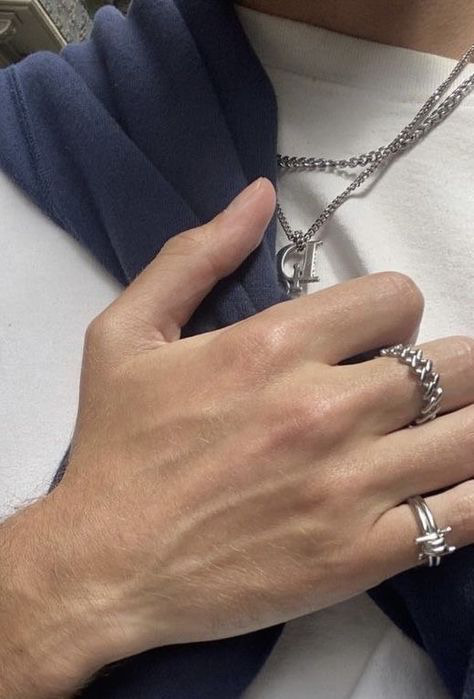
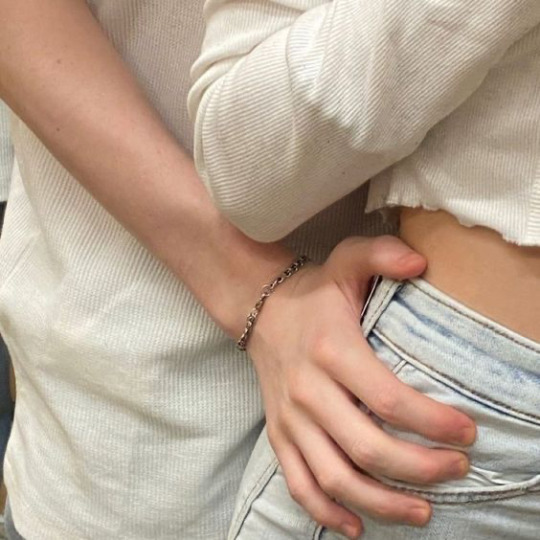
percy wears rings ; specifically silver rings. i feel like he also wears bracelets, specifically silver chain bracelets or anything matching with you. also always has a hair tie or scrunchie on his wrist for u. his hands aren't super veiny - they're kinda smooth ?? idk how to describe them but theyre just veiny enough that 😵💫. his nails r pretty short i feel - his mom made sure he regularly cut them and never bit them. he does wear nail polish sometimes but half the time it gets chipped.
JASON GRACE


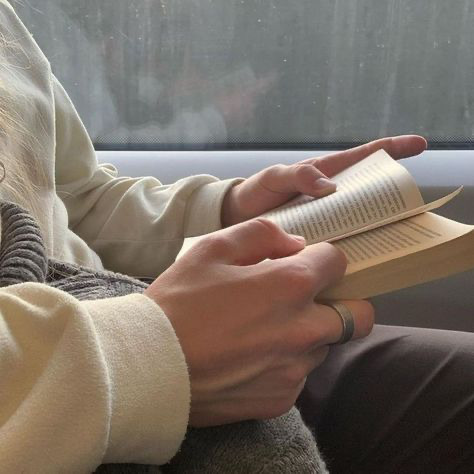
zoo wee mama this bitch has veiny hands <3 they go well w his BEEFY ASS forearms n biceps !! jason is so yummy ugh but anyways. he rarely ever wears jewlery i feel. only ever one ring on his middle finger and its just a plain band, silver with no engravings. his nails r kinda long-ish, bc he grew up with wolves and like he used to scratch people as a child i just know it. he can't stand if his nails are super long but he doesn't keep them as short as frank. his nails are actually really well kept ??? he only ever wears clear nail polish on them. also i feel like he uses hand lotion n shit ?? fancy ass
LEO VALDEZ


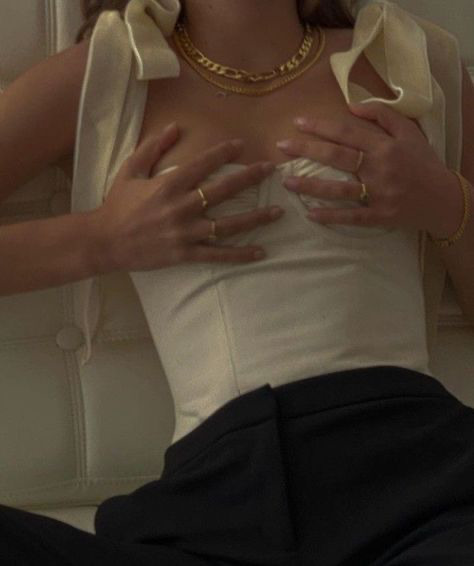
aughhhhhh he also doesn't have super veiny hands ?? theyre like just veiny enough tee hee. his hands + fingers r very calloused from all the work he does ( yk he's good w his hands 🤭 ) so they're kinda rough. his nails are short bitch. like short short. he grew up biting them so like. theyre short. i feel like he would only ever wear rings on super special occasions because he doesn't want them to get messed up while he's working. he definitely has a couple of scars on his hands from accidents he's had while working or just when he's being clumsy asf. he paints his nails a lot but it always chips after like twenty minutes.
FRANK ZHANG


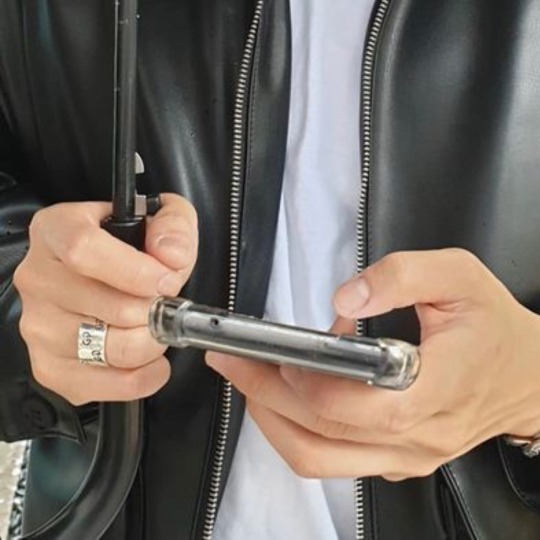
this. mf. has big hands. theyre real veiny and they're BIG. they're really soft n always warm <3 he won't wear any other ring except for one his mother left him, its gold and it has his last name engraved on it. his nails r pretty short, thats just how he likes to keep them. i personally can't see frank ever painting his nails but maybe he'll let you do it just once, because it makes you happy. he'll take it off like an hour after but only because he doesn't like the way it feels on his nails.
#brick lover (liz's version)#all da ladies luv leo (liz's version)#chinese canadian baby man (liz's version)#seaweed brain (liz's version)#liz’s writing ♡#pjo x reader#pjo x you#pjo headcanon#pjo imagine#percy jackson imagine#leo valdez imagine#frank zhang imagine#jason grace imagine#jason grace x reader#jason grace x you#jason grace x y/n#percy jackson x reader#percy jackson x y/n#percy jackson x you#leo valdez x reader#leo valdez x y/n#leo valdez x you#frank zhang x reader#frank zhang x you#frank zhang x y/n#hoo x reader#heroes of olympus x reader
3K notes
·
View notes
Text
I'm watching a Chinese drama called Blossom right now and it's doing historical arranged marriage in such an interesting way and it's making me think more about my post about arranged marriage and particularly, what models of marriage has the female character seen growing up?
Because maybe part of why the Sad/Angry at arranged marriage princess/noble woman feels so hollow is because the mother is usually placidly sitting beside her husband pushing for marriage too. If your parents have a fine arranged marriage, what are you so worried about? It can come off more as a petulant kid than a real denunciation if we don't have indication that they really know what they're mad about or afraid of (Eloise Bridgerton...) Especially when they keep emphasizing how the girls are sheltered and ignorant, where did she manage to get this disillusioned?
This drama has so far shown three failed marriages, all unique. One marriage broke down because the husband was sexually assaulting female servants, another because after emotionally supporting her failure of a husband for 10 years, he took a second wife right after getting his dream job (that one felt so real), and the last woman accepted her marriage wouldn't have affection but was appalled when her husband cheated on her with her half-sister as it violated her sense of marital decency and respect.
What I really like the most is the characters mostly buy into, and all of them expect, marriage to be explicitly political. The whole mindset feels a lot more genuine to the time period. No one is Shocked Pikachu Face that they'll be asked to marry someone for family alliance reasons. And the anti-marriage female lead, she earned that opinion. She knows. She's haunted.
#not jane austen#arranged marriage#historical fiction#the female lead is heavily anti marriage but it's because SHE KNOWS#I feel like they try to have it both ways re girl's ignorance#She's SO sheltered she knows nothing about sex but she has opinions about marriage?#tw: sa mention#writing#a little more time building her character and why she dislikes this idea#instead of assuming she has reasons#maybe what I'm saying is walk us through the reasoning like P&P 2005#instead of assuming it's obvious#maybe Chinese dramas are just better at this i havent watched that many#blossom
221 notes
·
View notes
Text

happy lunar new year! 恭喜發財!! 🧧💕✨
#fnaf sun#fnaf moon#fnaf eclipse#fnaf dca#dca fandom#lunar new year 2025#chinese new year 2025#does this count as my lion dance au?#i actually wanted to try and draw something for my lion dance au for new year#but i still lack the spoons#on the bright side#i've recently gotten a burst in motivation to write#so the writing muse is doing well#hopefully will post a new story on ao3 this week#it's almost ready to serve#wink wink nudge nudge
150 notes
·
View notes
Text
CHILD OF DIVORCE - PADDOCK PASS, BABY [ PART SEVEN ]
in which y/n hamilton is loving how much nico talks about her dad (china 24)
[ prev ] | [ next - coming soon ] | [ notes ] | [ masterlist ]
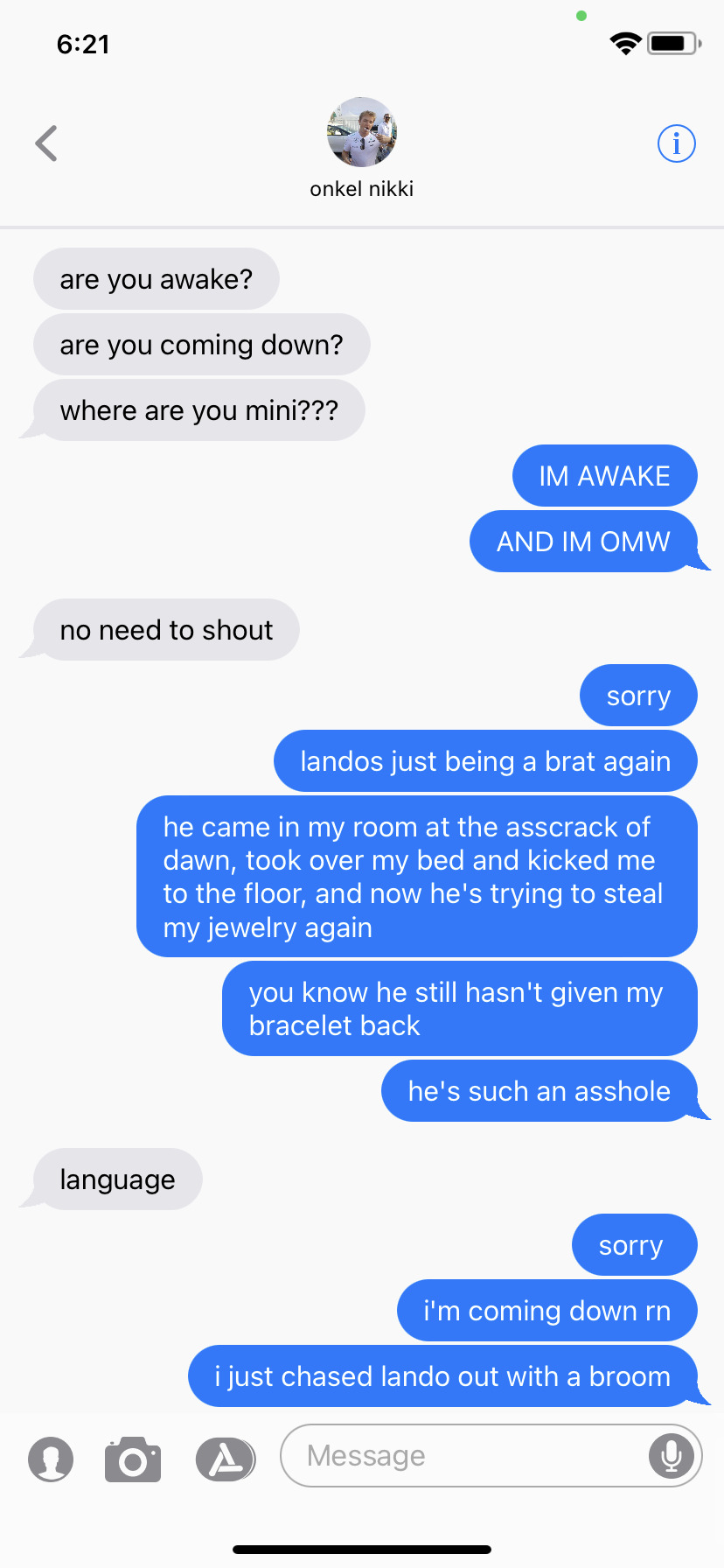

--

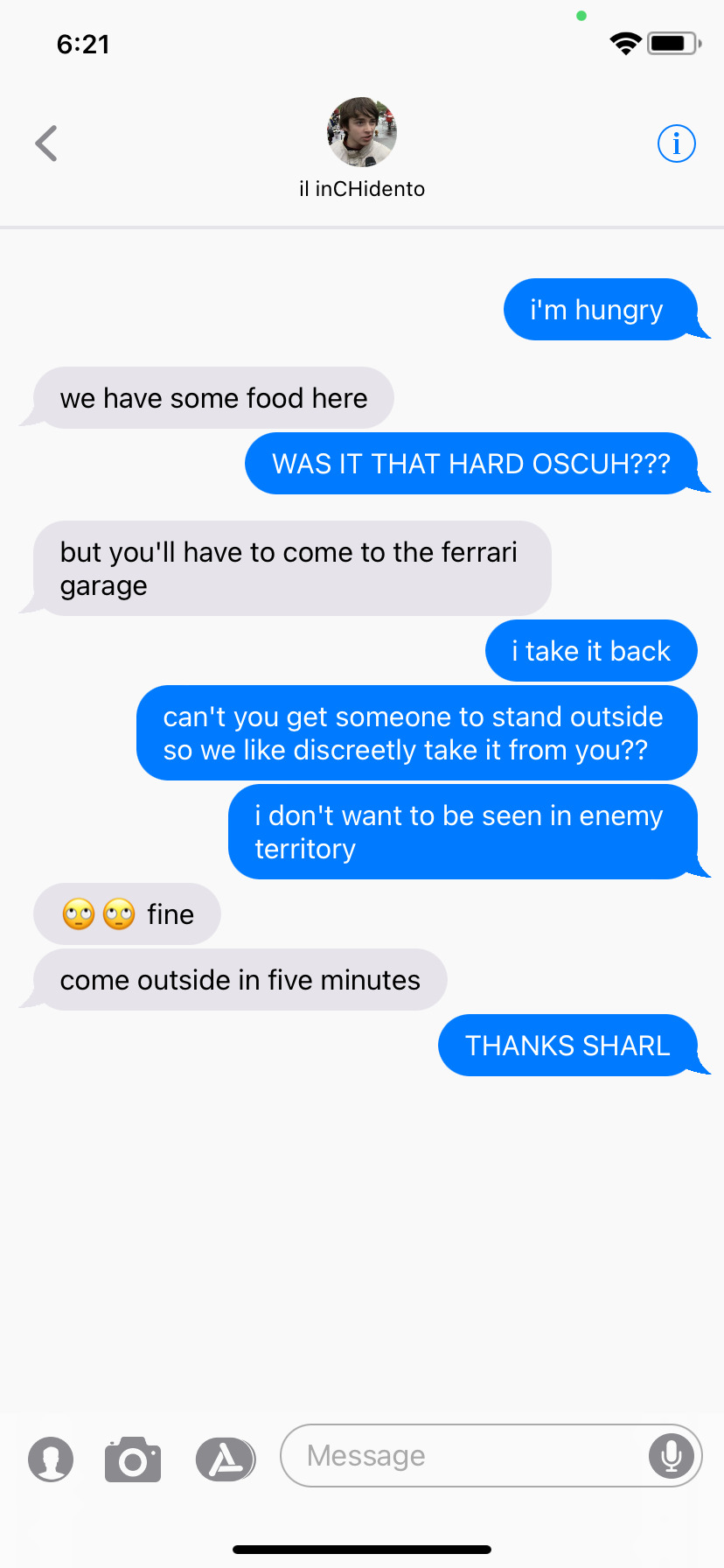
--
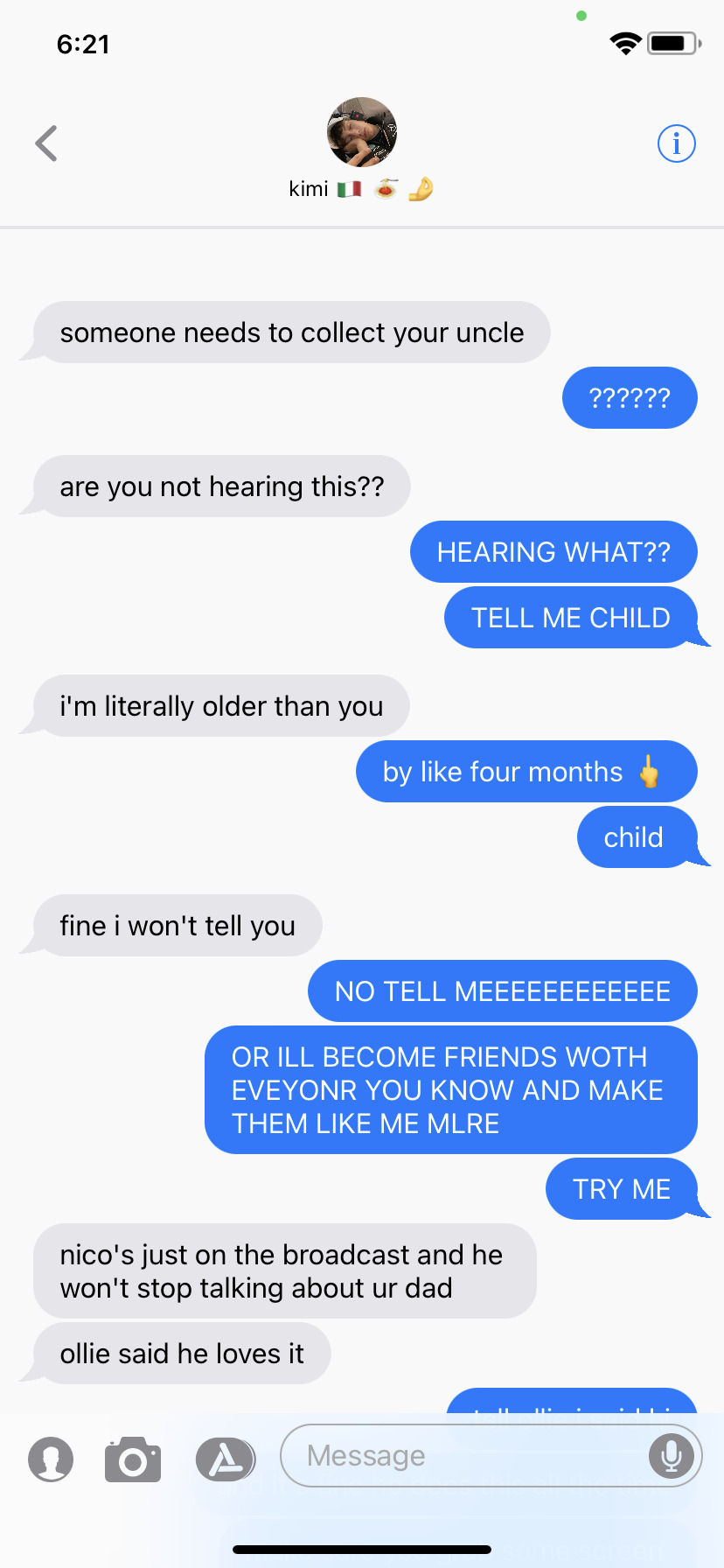

--
y/nhamilton

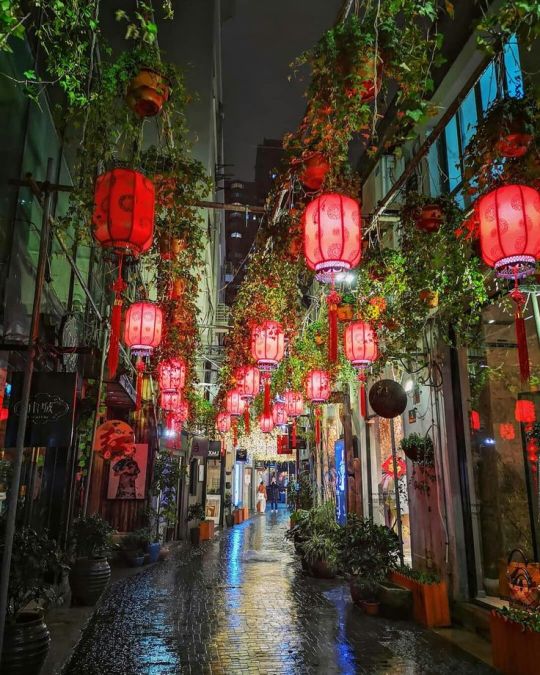
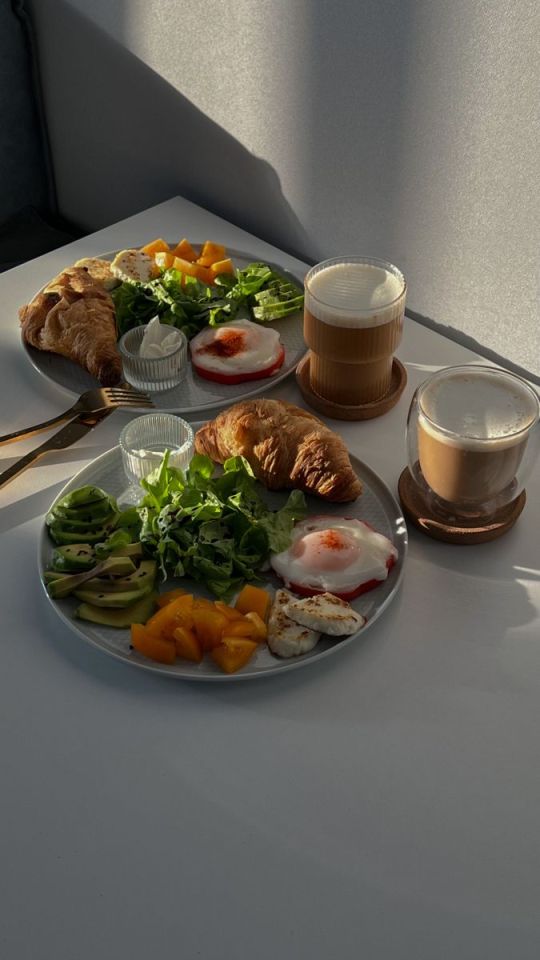



liked by alexandrasaintmleux, kimi.antonelli, maxverstappen1 & others
y/nhamilton: for everyone asking, yes my fav part about shanghai was obvs bullying my dad over anything and everything related to nico
tagged: valtteribottas, nicorosberg, zhouguanyu24, georgerussel63, lewishamilton
user: STOP THE WAY SHE MADE THAT HER CAPTION AND NOT A PINNED COMMENT -> user: i love her she's so us
user: everyone forgets y/n witnessed brocedes first hand -> user: not just witnessed, girlie experienced it -> user: y/n 🤝 kimi: children of brocedes divorce liked by kimi.antonelli
user: did lando give the bracelet back? -> landonorris: no. she chased me away with a broom -> y/nhamilton: i chased you because you were trying to steal something else -> landonorris: slander. lies. i will not stand for these accusations. -> y/nhamilton: then sit down boy
oscarpiastri: did you get your food? -> y/nhamilton: yeah no thanks to you. shoutout charlie -> charles_leclerc: you're welcome!
maxverstappen1: no podium pic? againnn?? this is the third time?
maxverstappen1: are you mad at me or something? now i'm getting worried -> y/nhamilton: maxie you need to calm down. the lighting's just shit -> maxverstappen1: okay. that's better -> user: stop i'm dying at how terrified he was
carlossainz55: ✋✋ -> y/nhamilton: 🤞🤞
user: i love the angle of the nico pic -> y/nhamilton: thanks babe
doriane.pin: thanks for not posting that ugly facetime pic! -> y/nhamilton: i'd never embarrass you like that bestie -> olliebearman: but you'd embarrass me like that?? -> y/nhamilton: duh
nicorosberg: i thought you said you're not posting that picture -> y/nhamilton: that was the 0.5 one. i have free reign with this one
---
TAGLIST: @67-angelofthelordme-67 , @somepoplemaybe , @nothaqks , @theforevermorereject , @thatonesblog , @devilstunoda , @xoscar03 , @mess-is-my-aesthetic , @d3kstar , @bwormie , @ietts , @sapphiccloud , @helaenatargaryensfavoritebug , @urfavsgf , @raevyng , @khaylin27 , @champomiel , @nikfigueiredo , @danabom1633 , @sugarvibez , @topgunmav1df1 , @alliwantisadonut , @screamforstark , @lifewasawillow , @woozarts , @e-nonsense , @bruhhhhhhhhhhhhhhh , @stinkyjax , @certifiedlesbianbaddie , @ecsta-ccy , @formulaonebuff <3
send a message/comment/ask to be added to the taglist!
NOTE: sorry for the long wait, i am for sure continuing this series, just might take a while to catch up :( don't forget to like + reblog <3
#naqia's au's!#naqia writes!#paddock pass baby! au#formula one racing#max verstappen#f1#dad!lewis hamilton#dad! lewis hamilton#lewis hamilton#lewis hamilton!dad#lewis hamilton!daughter#formula 1 x reader#formula 1 fanfic#formula 1 imagine#formula 1 fic#formula 1 x you#f1 2024#chinese gp 2024#lewis hamilton smau#f1 smau#f1 social media au#formula 1 smau#formula 1 social media au#instagram au#instagram edit#nico rosberg#lando norris#charles leclerc#oscar piastri#kimi antonelli
773 notes
·
View notes
Text
Part of the reason why Cang Qiong accepts Shen Qingqiu's "memory loss" so easily is because the Qing Jing peak lord even forgot how to write...
AKA modern Shen Yuan grew up learning and writing Simplified Chinese so you really can't blame him for struggling with traditional Chinese. He can guess the characters while reading, but writing? Haha... Do you KNOW how many more strokes there are in Traditional Chinese for the same character?!
Let's take doctor as an example: 医生 (simplified) vs 醫生 (traditional)
Heck, some of the differences are minor but it's still a brainfuck: 够 (simplified) vs. 夠 (traditional)
Ming Fang has taken to proofreading and rewriting his shizun's reports before they get sent out to external parties for this reason.
#svsss#svsss ideas#svsss au#shen qingqiu#shen yuan#mxtx#scum villain's self saving system#Shen Yuan writes in simplified chinese; this is a problem when he becomes shen qingqiu AU
833 notes
·
View notes
Text

Meng Chu, translated by Kenneth Rexroth, from The Orchid Boat: Women Poets of China
#lit#meng chu#poetry#kenneth rexroth#chinese literature#writings#quotes#fragments#typography#dark academia#quote#p
1K notes
·
View notes